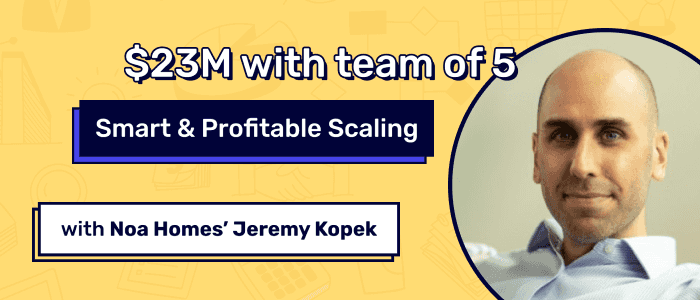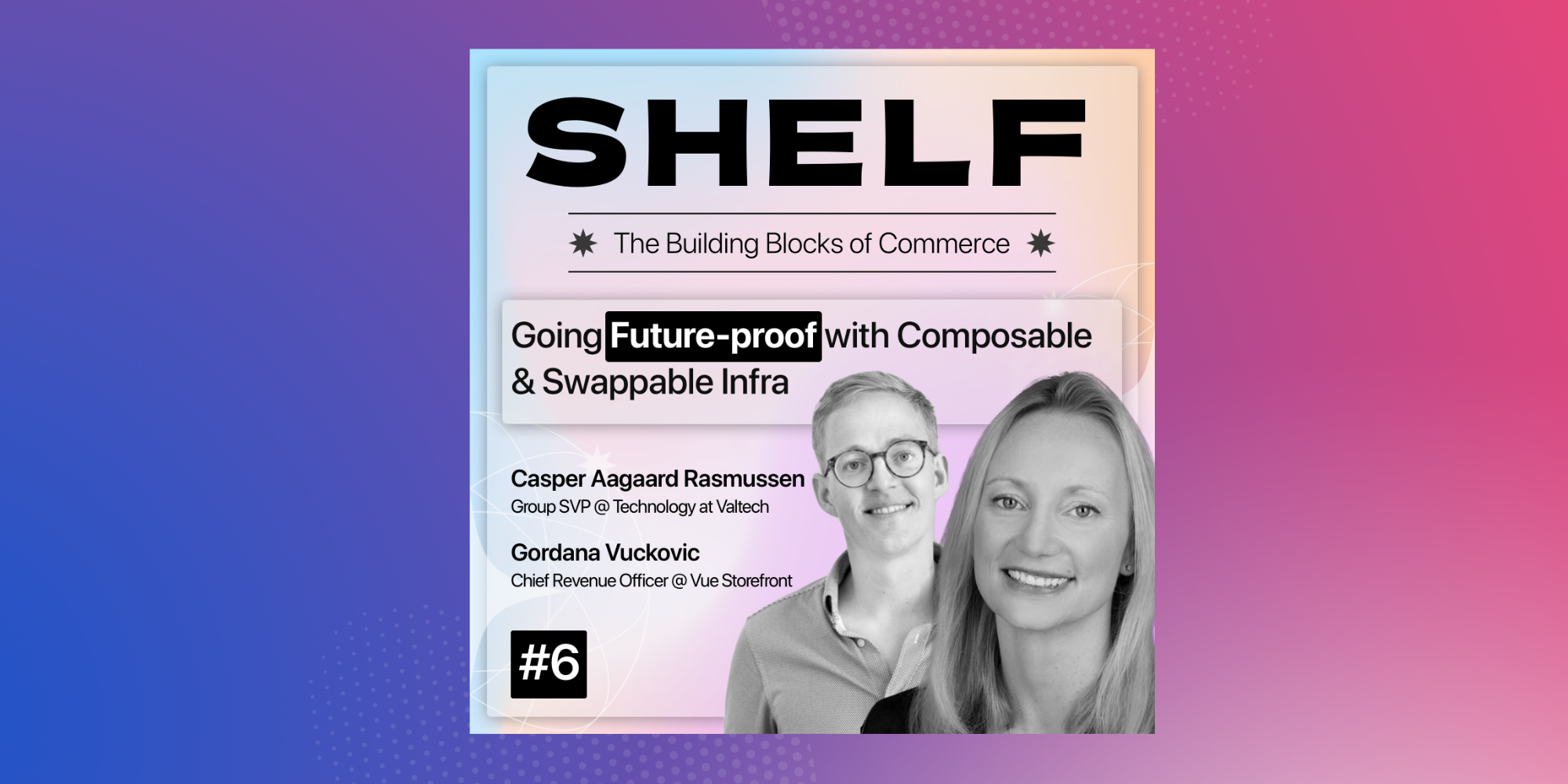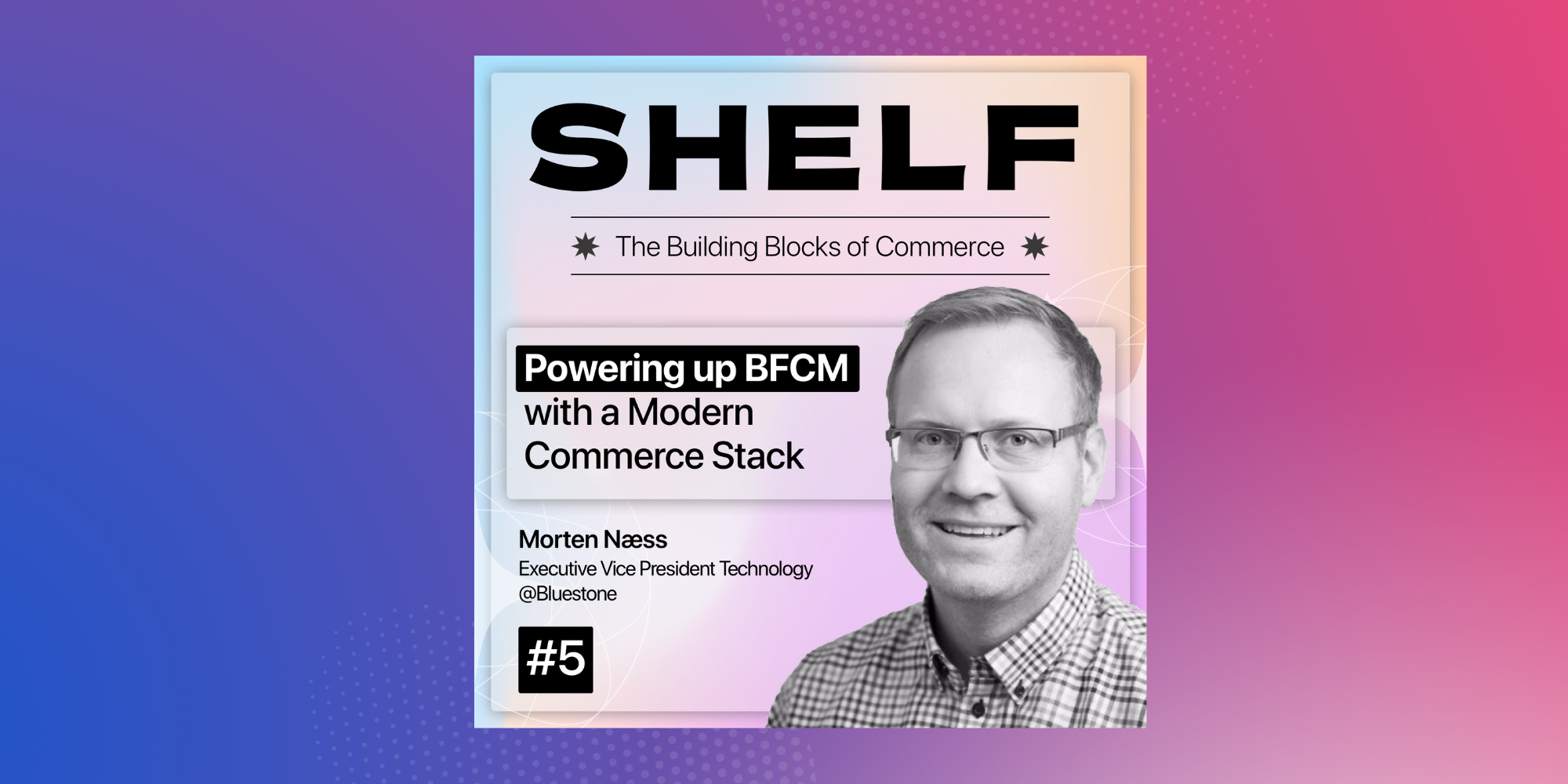$1 million in the first year.
Then $3 million.
Followed by $7 million. 🤯
Next came $13 million. Then $23 million last year with only five full-time employees.
What began in 2017 with just $50,000 investment has become a global furniture force to be reckoned with—Noa Home has continued to grow exponentially, reinventing how furniture is sold online to customers across the globe.
If you haven’t already guessed it, there’s a lot of D2C best practices and eCommerce growth strategies you can learn from Jeremy Kopek’s journey.
A few key learnings include:
- How international markets can be a massive game changer for D2C if you know how to tap it right.
- How to improve the conversion rate of your online store and how to improve conversion rate as an e-commerce business.
- Why optimizing for customer experience is super crucial to boost conversion rates & grow your online business.
- How to scale a DTC business.
Check out 👉 Jeremy Kopek's DTC Insights 👈 (or read the key takeaways below).
How It All Started: The Inception Of Noa Home
Kaus: Tell us about your experience before Noa and the inspiration behind your mission dollar idea?
Jeremy Kopek: I spent the bulk of my career in building and growing what today is one of Canada's largest furniture retailers. At the time I managed over hundred factories around the world in countries like India, Vietnam, Portugal, China among others; that gave me the chance to learn and appreciate the heritage plus craftsmanship involved in furniture making.
In 2016, amidst many ups and downs in my personal life, I had also met my partner JC and we had been talking about innovations taking place across numerous d2c industry verticals, but very little in the furniture segment. Also, since my work compelled me to spend most of my time in the Asia Pacific region, I noticed how North America was miles ahead of Asia when it came to furniture innovation.
It is here that my partner and I saw an opportunity, and we decided to take the leap of faith.
With $50 000, we decided to launch Noa Home, leveraging some of the contacts that I had built over 20 years, and bring an innovative spin to the customer experience and furniture marketplace.
How to Build A Profitable DTC Business, The Noa Home Way
From 0-1: The Groundwork
- Figure out product market fit—ask yourself, ‘does the product fit?’, ‘does the price point fit?’
- Keep a keen eye on the customer’s needs with an open mind on their pulse. Listen well, pay attention to their wishes and desires, especially if the TG is geographically dispersed.
From 1-10: Scale the Mountain
- You are as good as your team—make certain that they are beyond excellent at what they do so they add continuous value to the business.
- This phase is marked with intense growth— here you need robust accounting, ERPS warehouse management systems and lawyers who will help you keep track across diverse geographies for obligations, rules and regulations that touch your business.
Kaus: Tell us about the first year of Noa? Was it a conscious decision to have Singapore-Australia as your operations base?
Jeremy Kopek: For us, the cost of setting shop in Singapore was profitable for few important reasons.
First, in the Asia-Pacific DTC space, the acquisition costs were 60% cheaper than in North America, so it was very opportune.
It also helped that I had built numerous vendor relationships in the region, as I had mentioned before.
Since we had no minimum quantities, we were able to fulfill small sample orders, and ship them to Singapore within a week or maximum two weeks time. We would publish our products on our eCommerce platform and immediately start to test traction.
So with very little capital + resources and in less time, we were able to validate the design, price point, and the overall shopping experience.
Also, a majority of Singapore’s population speaks English which helped greatly.
Plus, eCommerce in the region was just about picking up speed at the time we entered the market which is why we decided to set up shop here.
After our initial success, we tried to figure out what other markets were similar to Singapore, and Australia fit the bill. Both countries helped us raise a million dollars of revenue, and believe it or not, it was just my partner and I managing everything from photo shoots, product design forecasts and planning to digital advertising and beyond.
Lessons Learned For Every New D2C Business Owner
On the Product Side
Constant iteration and tweaking is key. Learn how to localize the design for each market.
Keep in touch with market learnings and customer feedback to improve the quality of your offering. The end goal must be to keep the defect rate to the bare minimum vis-a-vis industry standard defect rate.
On the Marketing Side
Understand the path to purchase for a furniture.
Get a hang of ad-work of platforms like Google, Facebook and leverage platforms like Tik-Tok and Pinterest to initiate initial product discovery.
- Do not forget to integrate social proofing to establish credibility of your products across the funnel.
- Work with a great ERP warehouse management system (preferably in-house built) that would collect all customer data in a multi-touch attribution model, aiding in clearer, deeper understanding of your funnel touchpoints.
- Collaboration is integral—engage in partnerships with other retailers to showcase products in their stores, pop-ups early on.
On the Operations Side
Take time to zero down on the right partners who’ll ensure smooth, hassle-free delivery of your high AOV product.
Remember it isn’t just about your product but also how you place yourself in the market, and how you serve the order that comes in at the end of the experience, which is equally, if not more, important.
Kaus: How did you optimize CLV for your business?
Jeremy Kopek: So, we aren’t selling deodorants like Naitive or eyewear like Warby Parker. We don't speak of repeat purchase—we speak of returning customers.
We are a unit economically profitable nearly on every sale due to a high AOV. So the question is how do we build out on the AOV and the returning customer percentage by broadening the assortment.
Hence, we've grown into new categories such as rugs, bedding, home office etc. allowing us to get more products per basket and more customers coming back on the basis of a very positive first experience. So that's how we look at that equation.
Jeremy’s Bullseye Strategies: How to Improve Conversion Rates as an eCommerce Business
- Enhance the customer’s shopping experience from the start till the end of the funnel.
“We provided virtual consultations i.e. one-on-one conversations with a colleague to walk you through a product or website, whether digitally or in real life, reassures the customer and provides that legitimacy needed for a business to grow.”
- Observe customer’s movements across your site to understand pain points.
- Craft the best mobile store experience that should dictate your desktop experience. From design to compelling photography and view of the product’s features, playing with various features and functionalities, changing colors, CTA buttons, cart— pay attention to the minutest of details involved across both mediums.
“While the discovery is majorly on mobile, the transactions are being completed on the web store via a desktop or laptop. The hypothesis here is that the customer is looking to get the full experience when it comes to making a high-value purchase. Desktop is where the most conversion will take place.”
- Effectively explain to your customer what they need to know (delivery, return policy, how-to-use product.)
✌️For more tips on how to scale DTC business, eCommerce growth tips and D2C growth takeaways, take a look here: The DTC Bible playlist by Mason
🖋️ 📝 For D2C marketing tips, D2C best practices & all things interesting, you can read here: https://getmason.io/feed/






